With over 800 exhibitors in Frankfurt this week finding the time to visit each company will stretch even the most dedicated additive manufacturing professionals.
However, it is hard to miss the formnext debut of Xerox. The US print and copier manufacturer has a sizeable stand on the first floor of hall 11.
Xerox formally announced their intent to join the 3D printing industry in a statement made by incoming CEO John Visentin in October 2018. With five months in that position and speaking investors and analysts, Visentin revealed that Xerox was, “developing a roadmap to participate in 3D printing.”
This announcement was followed by the acquisition of Vader Systems and the company’s liquid metal jet technology, then a 3D printing trade show debut at RAPID 2019.
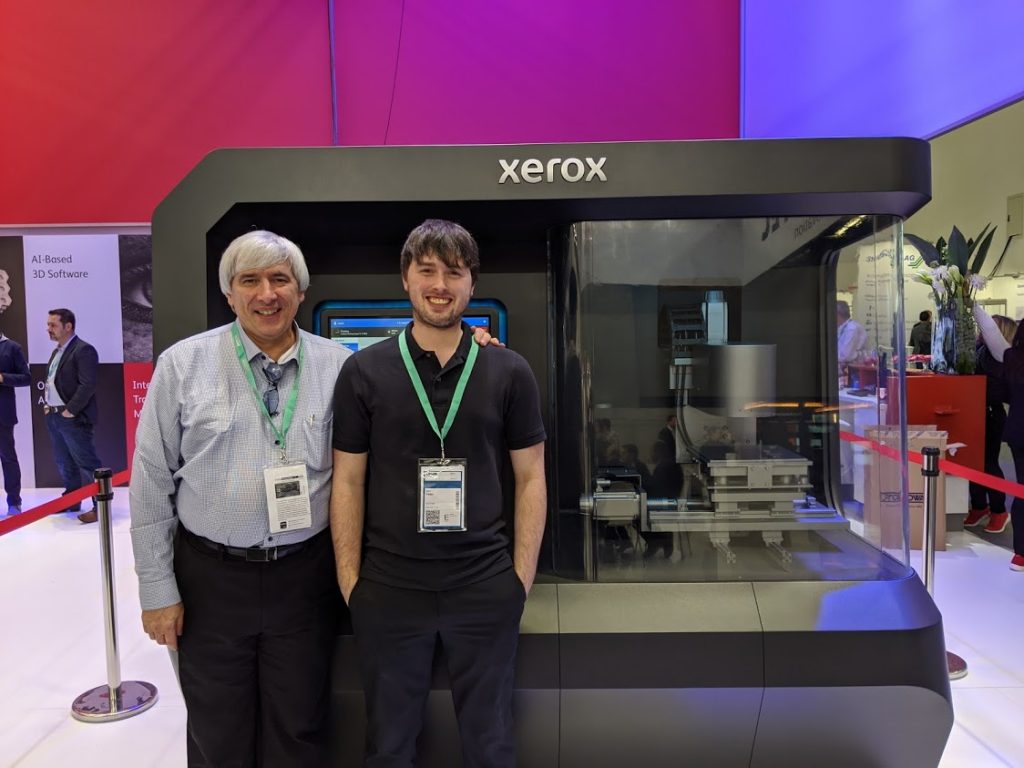
Most recently, Xerox has been featured on these pages for an audacious takeover proposal to HP, a company three times larger. While Xerox was unable to provide further details about how the deal is progressing, and how an eventual merger may play out in the 3D printing sector, the Director of Additive Manufacturing at Xerox gave me a briefing on what visitors to formnext can expect to see at this weeks show.
Kevin Lewis is approaching three decades with Xerox and tells me that the move in 3D printing has been a long time coming. Xerox has, “been in the 3D market for quite a while. We’ve been providing our inkjet print heads to a major 3D printing manufacturer for 20 years or more.”
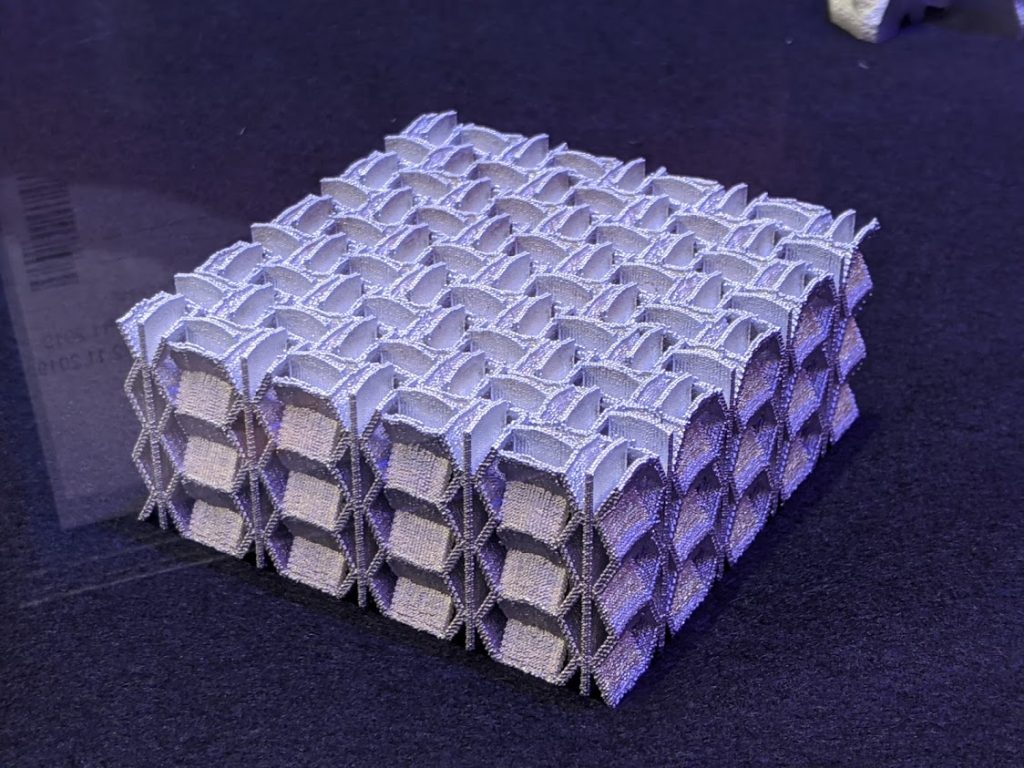
Two things have prompted a further move in the 3D printing industry, market conditions are now right for Xerox to “play in making high volume end-use parts” and secondly a new leadership team looking for opportunities beyond the company’s core business.
The expertise gained in printing documents with such inkjet heads is summarized by Lewis as “We are good at reliably depositing material at scale. We know how to put toner down precisely, we know how to put ink down precisely.” This technology is also surrounded by workflows and software that makes for seamless customer experience.
The four elements of the Xerox 3D printing portfolio showcased at formnext 2019 are the ongoing development of the Liquid Metal 3D printing system, AI software that is integral to the system, polymer powders for SLS 3D printers and a high-speed FDM system Xerox calls Multi Nozzle Extrusion.
The Vader Systems metal 3D printing system might seem like an unusual technology for Xerox to choose as a first 3D printer to bring to the market. The technology is relatively novel and still unproven on the market. Lewis explains the choice was not so remarkable. While Xerox is not known for its metallurgical expertise, the company is highly skilled in jetting physics, “We know a lot about how drops form, how drops coalesce, stick to substrates etc.” This gave Xerox confidence they would be able to rapidly understand the technology, make improvements and quickly get to a commercial offering.
The Vader Systems technology uses an “off the shelf” aluminum alloy, which customers will likely already be familiar with and the parts produced require minimal post-processing, with no additional depowdering, debinding or sintering steps. In terms of productivity and reliability, “this technology scratched all those itches” says Lewis.
The final technical specifications and pricing of the system are yet to be announced, build volume will be 30 x 30 x 30 cm, the goal is for operation without a pressurized chamber and Xerox is targetting the end of 2020 for the first commercial customer.
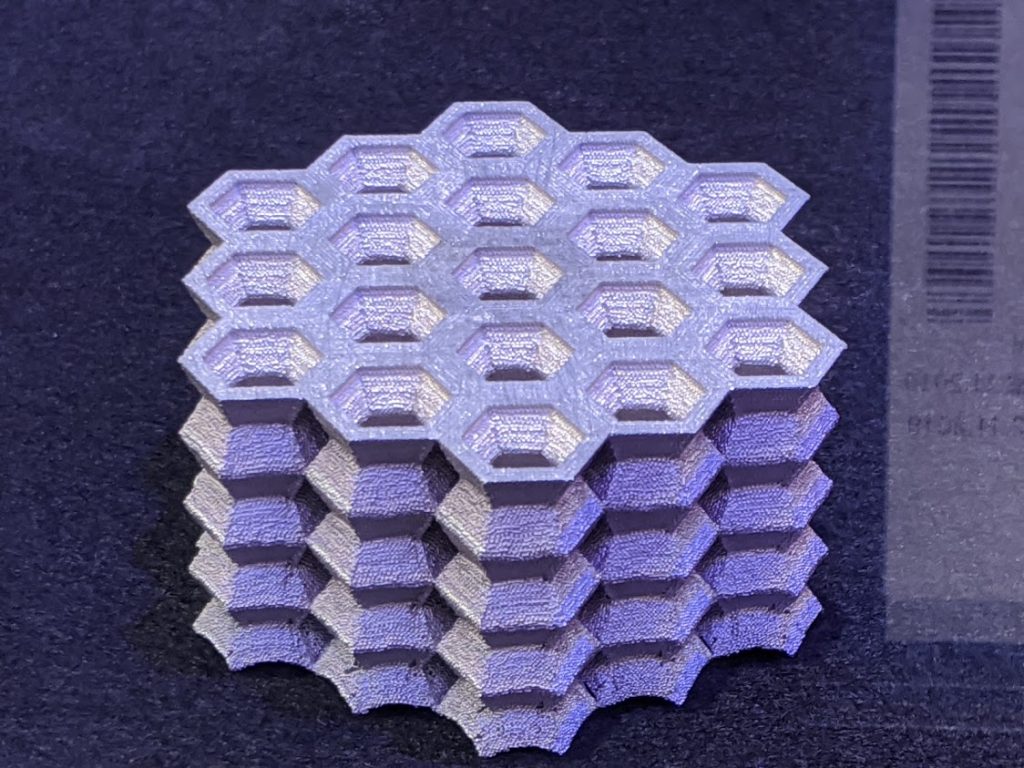
Metal 3D printing might seem a tough prospect to begin a venture into additive manufacturing, but Lewis highlights the experience of Xerox in developing polymers. “Toner is an engineered plastic, it needs to be highly spherical, particle size needs to be controlled. It needs to be consistent from batch to batch,” he says, adding “well that sounds a lot like SLS powders.”
At Xerox’s world-class research center in Canada materials for the 3D printing market are under development. “We believe that there’s an opportunity for us to provide materials to the market,” specifically lower volume, higher value 3D printing materials. Xerox has been doing this in “kind of small way, helping customers out for quite a while,” says Lewis. But now the company is “looking to make a bigger splash in the market.”
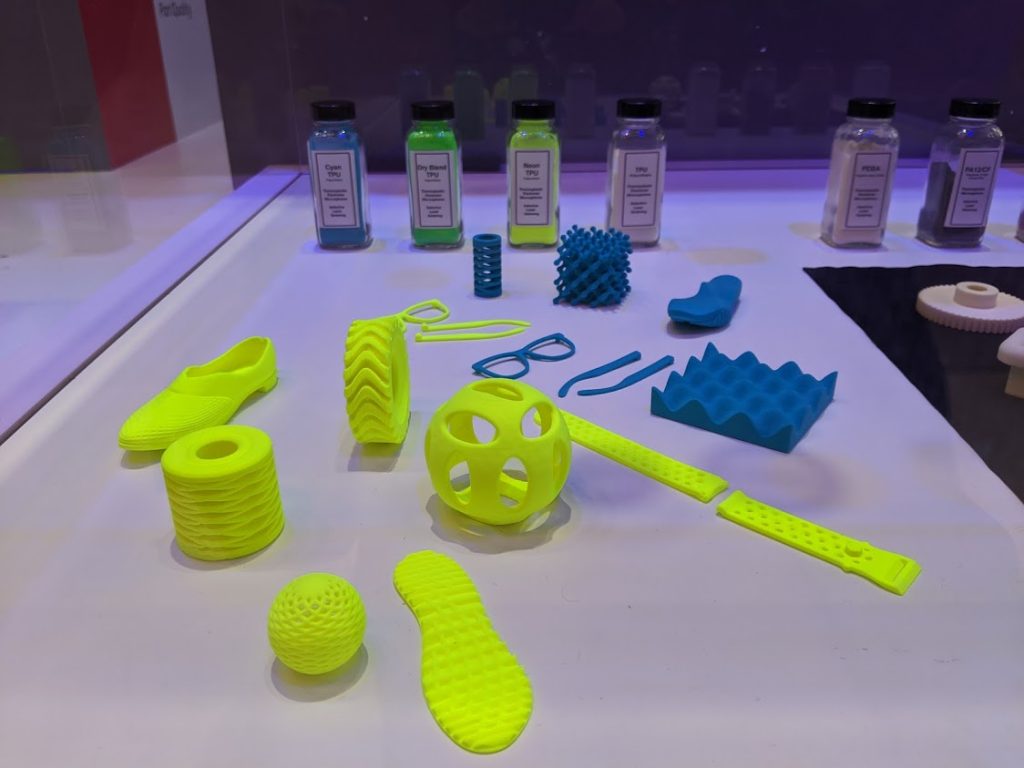
The next part of the additive manufacturing ecosystem Xerox plans to address is software. The expertise of the company’s Paola Alto Research Center (PARC) has been brought to bear on this element that uses, “physics-based modeling to augment the AI-based software”. This is evidenced by a part produced for DARPA, Xerox is also working with DoD and NASA in research areas. “The software is going to find its way into making the Liquid Metal printer perform much better,” says Lewis.
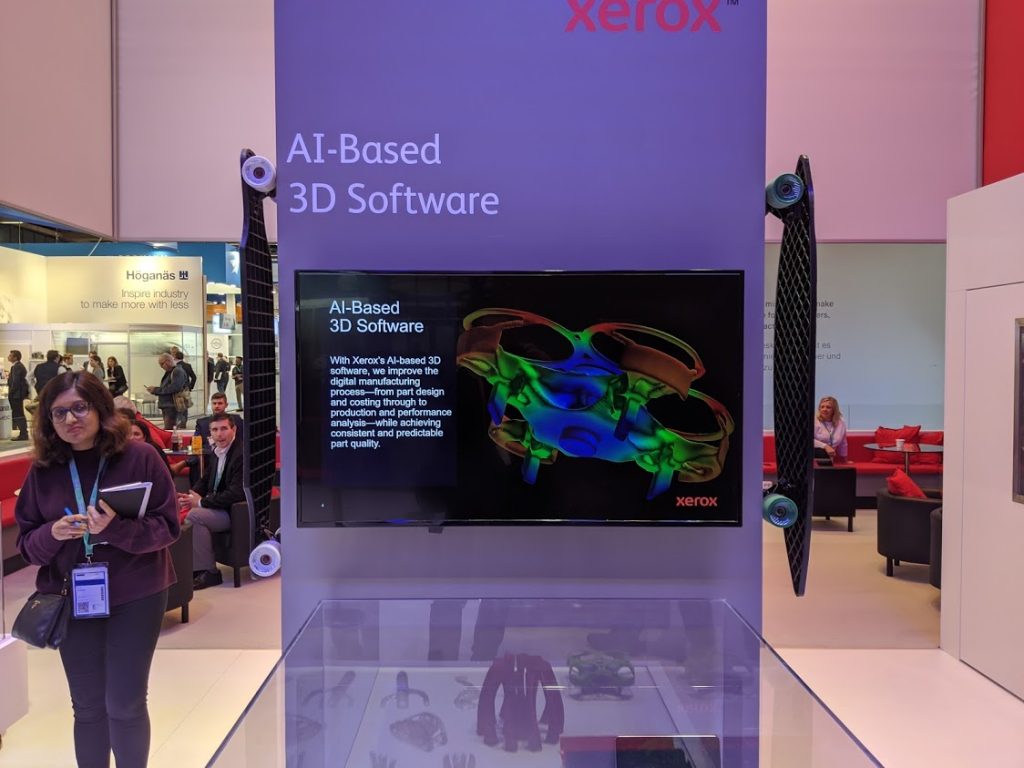
Multi Nozzle extrusion, an FDM 3D printing system, completes the offerings brought to Frankfurt by Xerox.
“We’re going to be vertically integrated and we think the market opportunities are bigger for us than Liquid Metal. But liquid metal with AI-based software, then polymer powders for SLS and then the material extrusion. This is the portfolio in the order of where we’re focusing.”
The decade of additive manufacturing
The forthcoming new decade has also seemingly sharpened the company’s thoughts regarding additive manufacturing, “2020 from our standpoint is the start of when we start playing in the market,” says Lewis.
“The decade of the twenties is when the [additive manufacturing] market, and not just Xerox will really start getting a toehold in manufacturing. Maybe not even a toe maybe a foothold or, you know, maybe up to the knee.”
Lewis believes that there is a clear sense that substantial effort in developing 3D printing-related technology is about to pay off. While some efforts can be characterized as realizing the technology through projects that showcase its capabilities for novel applications, such as complex geometries, or even the worlds largest 3D printed boat, Lewis says, “what’s missing right now is kind of the economics and really the value across the whole manufacturing supply chain.” He believes this value is currently “untapped” and in the next decade Xerox hopes to unlock this by making “manufacturing as easy as we did for print.”
This ambitious approach is reminiscent of statements made by HP when they first launched the Multi Jet Fusion 3D printing system with proclamations of disruptive technology and kickstarting the next industrial revolution. The infusion of new players and energy into the 3D printing industry is certainly a welcome addition, and one likely to see more established companies not only raise their game but also benefit from the increased attention brought to the sector by having major multinationals like Xerox join the industry in earnest.
And how is Xerox planning to lead in the 3D printing industry? The answer is with a combination of materials, software and hardware expertise that is a “function of the whole infrastructure. Xerox has done that for 2D printing and we will do it for 3D printing,” concludes Lewis.
The 3D Printing Industry team is back in Frankfurt for formnext this week. Get in touch if you’d like to meet. If you can’t attend the show, then follow our social media accounts on Twitter, Facebook, and LinkedIn.
Subscribe to the 3D Printing Industry newsletter for the latest news in additive manufacturing.
Looking for a career in additive manufacturing? Visit 3D Printing Jobs for a selection of roles in the industry.


